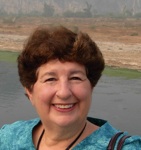Diarrhea kills nearly two million children under the age of five each year. It is the world’s second leading cause of death in this age group. Most of the affected children live in developing countries, and have limited access to clean water and modern medical facilities.

Photo courtesy of Saint Louis University
“When children in this country develop severe diarrhea and become lethargic, their parents can take them to the emergency room for IV fluids,” explains Pete Ruminski, executive director of Saint Louis University’s Center for World Health and Medicine. “Even if the diarrhea isn’t severe enough for hospitalization, pediatricians routinely replenish fluid and electrolytes with Gatorade or its equivalent dissolved in clean water.”
Diarrhea can have many causes. Cholera often accompanies major disasters. Infection by amoeba, viruses such as rotavirus, and parasites like giardia all result in the cramping and loss of water and electrolytes in this potentially lethal syndrome. The bacterial E. coli epidemic that has recently sickened thousands of Europeans has diarrhea as one of its manifestations.
Except for opiates, the main drug available to treat the symptoms of diarrhea is Immodium. Immodium keeps the large intestine from contracting, but is not recommended for use in young children.
Continue reading Former Pfizer researchers work together to fight diarrhea in developing nations

